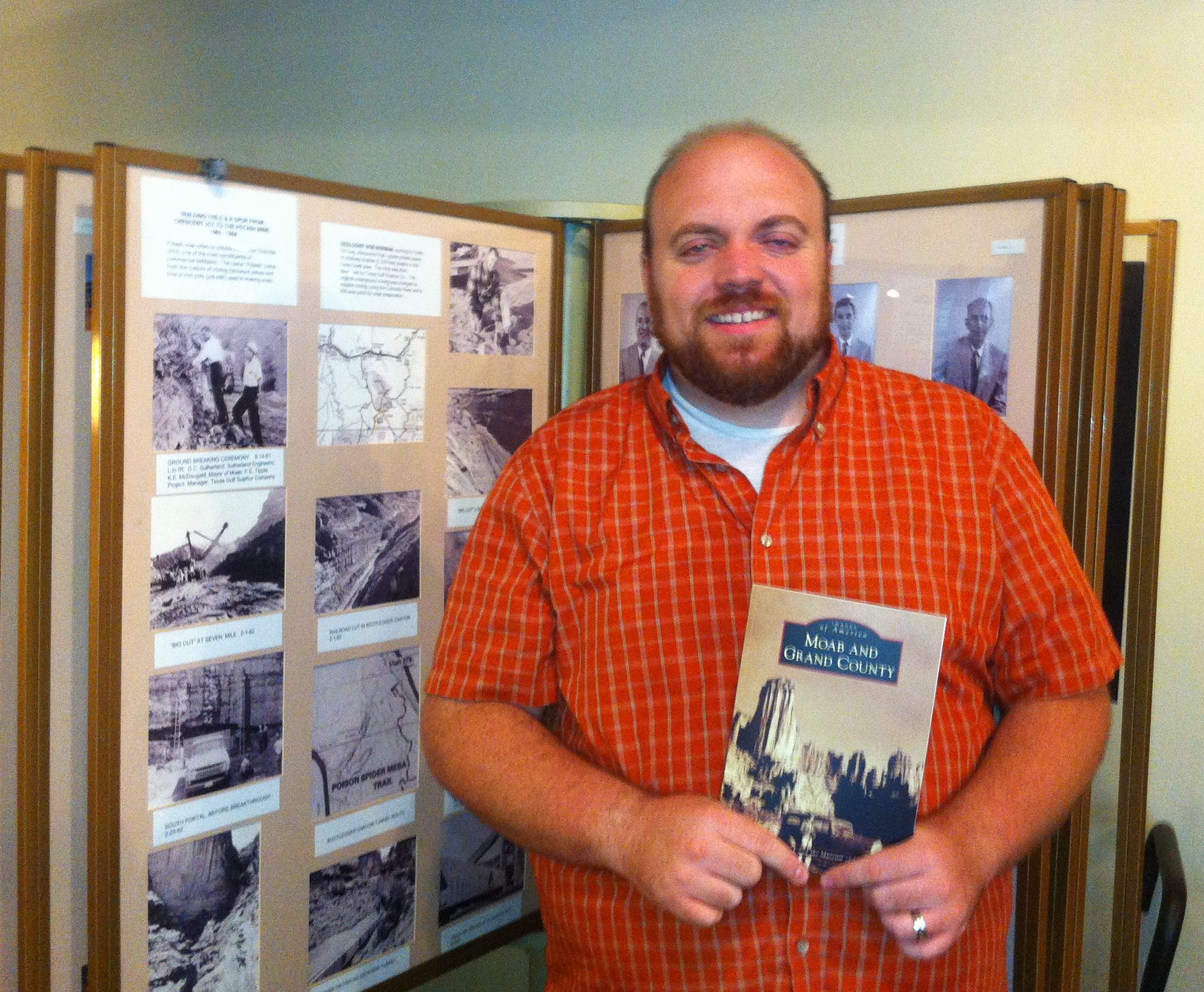Some information may be outdated.
There’s a new book about Moab. And it’s filled with pictures.
Travis Schenck, the director of the Museum of Moab and the author of “Moab and Grand County”, was able to use the museum’s extensive photo collection to document Moab’s history.
“The book boasts more than 200 vintage images and memories from the early days,” said Suzanne Lynch of Arcadia Publishing.
“Moab and Grand County” is part of the publishing company’s “Images of America” series, which boasts more than 6000 books documenting U.S. history through images, town by town across the nation.
This isn’t the first time Arcadia Publishing has worked with a museum.
“We often work with museums and historical societies. They have the images and the qualified, interested historians that make great authors,” Lynch said. “Our books are a great way to compile the photography archives of historical organizations and make them accessible to the public.”
The photos chosen for the book were from the Museum of Moab’s extensive photo collection, which over the past ten years museum staff has been working to scan and digitize.
“For this collection of photos we chose ones that had relevant bits of history and were in a condition that they could easily be published without too much retouching and editing,” Schenck said.
While it took over 55 years for the museum to collect the photos for the archive, Schenck began working on compiling the images and stories for the book a full year ago.
“I am grateful to the residents of Moab for the help they provided in putting this book together. Their stories, lives, and colorful histories are what gave the book its story,” Schenck said.
One of the things that Schenck enjoyed most was learning about Grand County towns that are now gone.
“I became fascinated with the vanished towns and the places that had changed names like Coyote, Crystal Carbon, Sego and other ghost towns and modern settlements that have changed over time,” Schenck said.
This book does more than preserve Moab’s early stories; sales will benefit the Museum of Moab’s effort to preserve Moab history.
“The royalties will indeed go to the Museum of Moab,” Lynch said. “I am sure that the royalties will help the museum in their preservation efforts. All of the photographs in the book came from the Museum of Moab.”
And it doesn’t matter where you buy the book for the museum to benefit.
“The museum receives all royalties from the book sales so a percentage of each book whether you buy it at the museum, Back of Beyond Books, or even on Amazon.com will come back to the museum,” Schenck said.
The Museum of Moab now has 1500 historical images and close to 10,000 natural history images donated by Fran and Terby Barnes.
The museum is always looking to expand their historical images, Schenck said.
“We’re looking for photos of the last 50 years from the Uranium Boom through the Bust,” Schenck said. “Though that time may be fresh in the memory of many people, if we preserve it now then future generations will know more about our story in Moab.”
Schenck said that they don’t need to take a physical copy of donated photographs, as they are working on a digital database.
“If you call ahead the museum can scan your photo into our computer files and save it in our database,” Schenck said. “You can keep the original copy and we’ll preserve the digital copy for years to come.”
Schenck encouraged residents to help the museum preserve Moab history by becoming Museum of Moab members and supporting their projects throughout the year.
“Also keep your eyes open for things that need to be preserved in our community can help to make sure that they are protected for future generations,” Schenck said.
Appreciate the coverage? Help keep local news alive.
Chip in to support the Moab Sun News.





